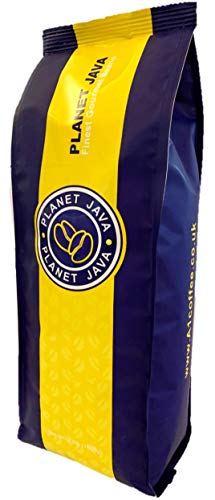Coffee Bean Types: Arabica, Robusta, Liberica, and Excelsa
You've probably heard that different types produce distinct flavors. Read on to learn about four of the most sought-after varieties: Arabica, Robusta, Liberica and Excelsa.
Excelsa beans, a variety of Liberica, are grown exclusively in Southeast Asia. They have a fruitier, more tart flavor and are frequently used in blends of coffee to add depth.
Arabica
Arabica is the most sought-after coffee worldwide with 75% of the global coffee bean production. Arabica beans are softer and sweeter than Robusta, and come in various flavour profiles. The aroma and taste of coffee are affected by the conditions under the conditions it is grown and the methods of processing used.
The word "coffee" actually derives from the Arabic word for berry and coffee beans are actually fruit seeds which grow inside bright red berries. It is believed that ancient Ethiopian shepherds noticed that their goats were energized after eating the berries. The cultivation of coffee spread quickly around the world.
Coffee beans can be grown at higher altitudes, and they are capable of flourishing when exposed to cold temperatures and lots of rain. This is one of the reasons for why Arabica is regarded as the most delicious coffee.
Many specialty coffee shops and roasters concentrate on ethical sourcing of arabica beans. They focus on fair wages for farmers and sustainable farming practices. These companies blend arabica beans to create unique signature coffees, which are suitable for different brewing methods. Blending gives you control over the flavour, aroma, body, and acidity of the coffee and is frequently preferred to create an even and consistent flavor that appeals to a larger market.
Robusta
Robusta beans (Coffea canephora) are the second most widely used type of coffee bean grown in the world. coffee beans in bulk contain more caffeine per bean than Arabica and are more resistant to diseases and pests. They also contain higher levels of chlorogenic acids that are antioxidants that occur naturally. These acids can cause oxidation in the coffee's brewing process and cause undesirable flavors.
The plant itself is more robust than arabica and is able to thrive in less favorable climate conditions and at lower elevations. It can withstand warmer temperatures and does well in direct sun. It grows faster and produces more coffee per plant than arabica, making it a cost-effective crop to grow.
Although it might appear counterintuitive, Robusta beans are often blended with arabica to make coffee blends. If you find names such as Uganda or Kenya on the coffee bags, it's possible that there is also some robusta.
Although some roasters only use arabica beans, the majority use blend the two varieties to cut cost and maintain the quality. To ensure the integrity of the flavor, it is essential to select a top-quality beans from a source you trust. The best way to achieve this is to purchase your beans directly from the farmer.
Liberica
Liberica beans have a shape that is similar to a football, which is what makes them distinct from other coffee beans. They have a distinct aroma that is fruity and floral with subtle smoky undertones. They are often blended with other coffee bean varieties to add a more intense, fuller flavor.
Liberica coffee beans are found in West Africa, Malaysia (Borneo) and Southeast Asia. They are resistant to hot, humid conditions and can be grown at low altitudes. They also have a much more resistant to diseases than Arabica and Robusta.
These attributes make them ideal for growing at home. You can purchase seeds on the internet from several sources, however it's preferred to purchase them from local producers to guarantee the quality of the beans. The ideal conditions for the cultivation of Liberica coffee are fertile, deep volcano soils with a pH that is moderately acidic and sufficient annual rainfall.
Excelsa is a different type of coffee bean. It was initially classified as a separate species, but has since been reclassified as a Liberica variant. These coffee beans are ovals that grow on 20 to 30-foot coffee plants that are located at medium altitudes. They have a distinctive taste that is both tart and fruity, which has made them a popular option in blends made by home. They have a more subtle aroma and caffeine content that is lower than Arabica or Robusta but they do have a unique depth of flavor.
Excelsa

Excelsa coffee beans aren't as popular as Arabica and Robusta, although they're fourth popular. In fact they were regarded as a separate coffee plant species until 2006 when they were classified as a synonym for Coffea liberica var. dewevrei. Nowadays, they're grown mostly in Southeast Asia and account for 7% of the world's coffee production. The coffee beans have a distinctive teardrop shape and carry a dark, mysterious taste. They are typically utilized to give blends extra body and a rich tart taste of ripe fruits.
Arabica beans are the most popular and are renowned for their more sweetness. They grow best at high altitudes and have warm, tropical climates. They are slightly acidic. If brewed correctly and roast, they can have notes of nuts, chocolate or even fruit.
Robusta is an almost identical choice to Arabica and makes up around 40 percent of the world's beans. Robusta beans are smaller and more round, but have twice the amount of caffeine as Arabica. They also have more bitterness than the other two varieties and are more likely to have earthy and woody undertones.
After you've learned about the four most common types you can now select your favorite brew. If you prefer smooth and delicate flavors pick an arabica or a blend of arabica beans and robusta beans.
